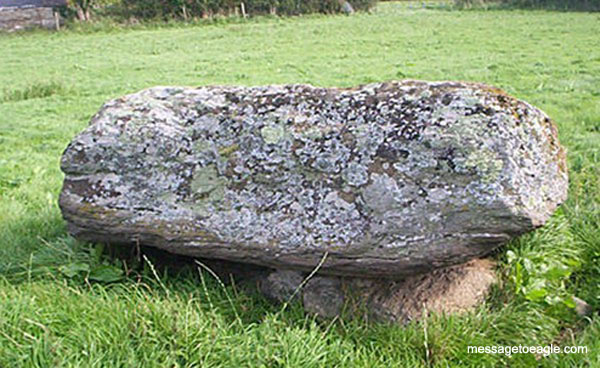Archaeologists set to investigate historic past of Neolithic chambered tomb in Anglesey
Archaeologists from the Welsh Rock Art Organisation have just begun excavating a Neolithic chambered tomb known as Perthi Duon on the Isle of Anglesey, an island off the north-west coast of Wales. The purpose of the excavation is to gain a better understanding of the burial and ritual practices that took place in the region over five millennia ago.
Perthi Duon, one of eighteen extant stone chambered monuments located within a 1.5 km corridor of the Menai Straits, stands as a solitary capstone within a prehistoric landscape in southern Anglesey, a historical island where more than 120 burial chambers, megaliths, settlements, and other ancient structures have already been found.
According to historical records, Perthi Duon formed part of a collapsed Portal Dolmen that probably has its origins in the Early Neolithic. It was sketched by the Reverend John Skinner, parish vicar and amateur archaeologist, during his ten day tour of Anglesey in 1802, who described how its cap stone and three supporters remained on the spot but had "long since been thrown prostate on the ground".

Perthi Duon sketched by the Reverend John Skinner. Image source.
A portal dolmen is a type of single-chamber megalithic structure, usually consisting of three or more upright stones supporting a large flat horizontal capstone. Most date from the early Neolithic period (4000 to 3000 BC), while the oldest date back around 7,000 years.
The team of archaeologists, led by Dr George Nash of the University of Bristol, have already uncovered several significant features including areas of compacted-stone cairn that would once have formed a kidney-shaped mound, surrounding the chamber of the monument.
"This discovery, along with other excavated features clearly show this monument to be a portal dolmen, one of the earliest Neolithic monument types in Wales, dating to around 3,500 BC,” said Dr Nash. "More importantly, the architecture of Perthi Duon appears to be a blueprint for other portal dolmen monuments within what is termed the Irish Sea Province. We hope, by the end of this excavation to gain a better understanding of the burial and ritual practices that went on at this site, some 5,500 years ago."
However, some may argue that the research team is approaching their research from the mistaken perspective that the dolmens were intended as burial chambers, as it still remains unclear when, why, and by whom the earliest dolmens were made.
The predominant theory today is that dolmens were built as tombs or burial chambers, despite the absence of clear evidence for this. Human remains, sometimes accompanied by artefacts, have been found in or close to them, but it has been impossible to prove that these archaeological remains date from the time when the stones were originally set in place. It is possible that the dolmens were used as burial sites long after they were built.
Featured image: Photo source.


















Comments
Recent (and ongoing) work at another portal dolmen site in Cornwall,UK.
http://www.giantsquoit.org/
It does seem that we have become very used to 'seeing' many structures as tombs, even without evidence, and this viewpoint is reinforced by most mainstream presentations of historical information. Thanks for the article.
Sculptures, carvings & artwork inspired by a love of history & nature: www.justbod.co.uk
Thank u
Researchers have found that many of these stone chambers were built on sites with magnetic or geologic anomalies, of these many were used to "treat" seeds which made the seeds double or triple in plant production. Authors John Burke and Kaj Halberg outline their work in this field in SEED OF KNOWLEDGE STONE OF PLENTY (2005) having traveled through North and Central America and Egypt testing rock and pyramid sites. No mention was made in the above article about any anomalies at the Wales site. Are there any?
Researchers have found that many of these stone chambers were built on sites with magnetic or geologic anomalies, of these many were used to "treat" seeds which made the seeds double or triple in plant production. Authors John Burke and Kaj Halberg outline their work in this field in SEED OF KNOWLEDGE STONE OF PLENTY (2005) having traveled through North and Central America and Egypt testing rock and pyramid sites. No mention was made in the above article about any anomalies at the Wales site. Are there any?